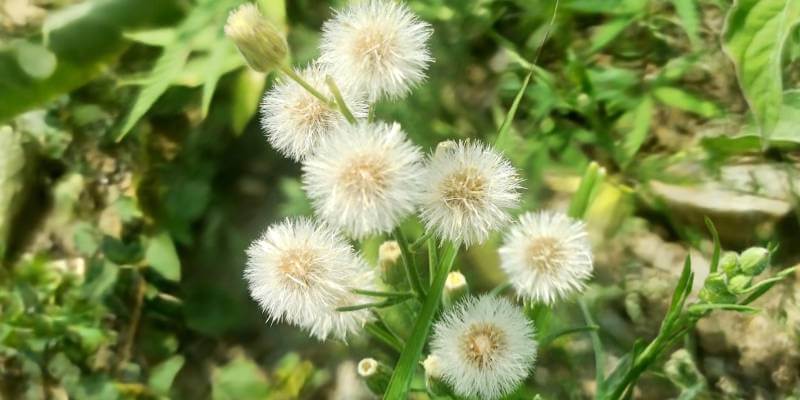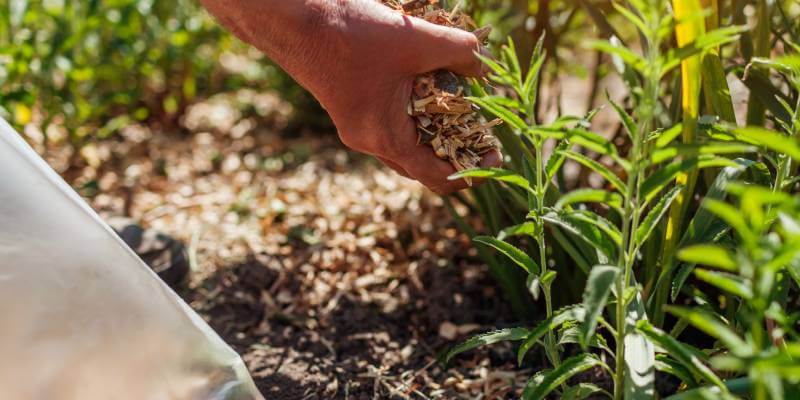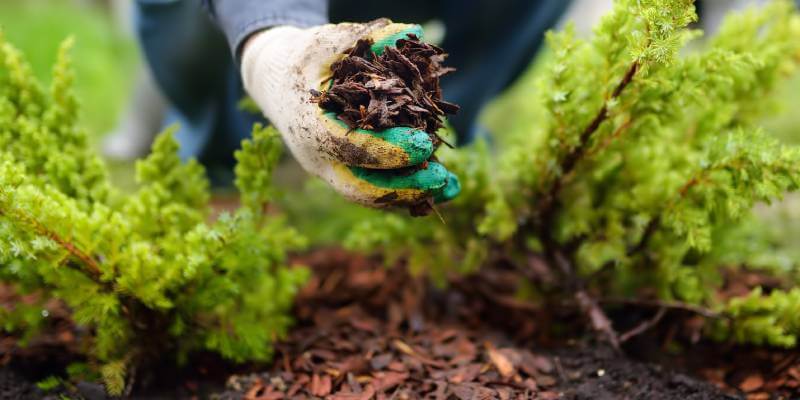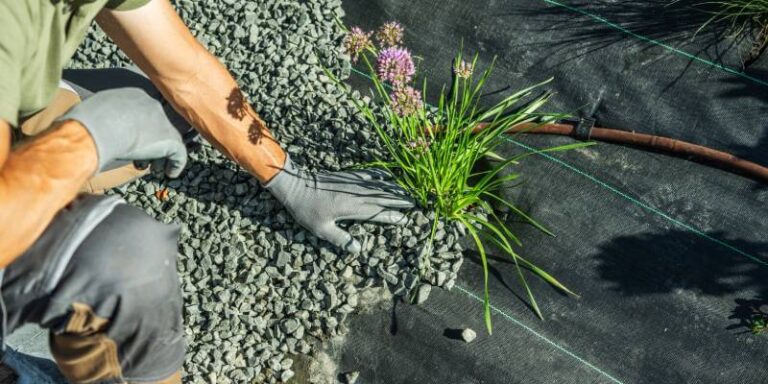There’s something truly uplifting about the sight of a wildflower garden in full bloom. The mix of colours, textures, and movement creates a natural beauty that’s hard to beat. But wildflowers do more than just look good; they support pollinators, enrich the soil, and help local biodiversity to flourish.
If you’ve ever asked yourself when’s the best time to plant wildflower seeds, you’re not alone. Getting the timing right makes all the difference between a patchy display and a thriving meadow that returns year after year.
Our expert ground maintenance in Milton Keynes helps clients plan seasonal maintenance schedules around these sowing periods, ensuring consistent and colourful displays year after year.
The Best Time for Wildflower Planting — When to Plant Wildflower Seeds
Getting the timing right is key to growing a healthy, flourishing wildflower meadow. Although wildflowers are naturally resilient, their success still depends on having the right combination of soil conditions, temperature, and rainfall. At Neal Landscapes, we always take these factors into account, offering tailored advice to suit the specific environment of each commercial site we maintain.
In the UK, the best times to sow wildflower seeds are during autumn (September to October) and spring (March to May). These seasons provide the mild weather and steady moisture levels that help seeds germinate and establish strong root systems.
In this guide, we’ll walk you through everything you need to know about sowing wildflower seeds:
- Benefits Of A Wildflower Garden
- When To Sow Wildflower Seeds
- How Long Do Wildflowers Take To Grow?
- Do Wildflowers Grow Back Every Year?
- How To Plant Wildflower Seeds
A wildflower garden is much more than just a pretty addition to your property. It’s a living ecosystem that supports wildlife, improves environmental quality, and even enhances well-being for employees and visitors alike.

Benefits Of A Wildflower Garden
A wildflower garden is much more than just a pretty addition to your property. It’s a living ecosystem that supports wildlife, improves environmental quality, and even enhances well-being for employees and visitors alike.
Biodiversity and Wildlife
Wildflowers are a true magnet for life. Their blooms provide vital nectar and pollen for bees, butterflies, and other pollinators, helping to support species that are in decline. Some butterflies are even completely dependent on certain wildflower species for laying their eggs. The insects that flourish in these habitats then attract birds and small mammals, creating a balanced, self-sustaining ecosystem that thrives throughout the seasons.
Encouraging biodiversity on your site also brings a natural form of pest control. Insects like ladybirds and lacewings, for instance, are excellent at keeping aphid populations in check — no chemicals required. For more information on pollinator-friendly planting, explore Buglife resources.
Human Benefits
Wildflower spaces also support people. Their vibrant colours and gentle movement in the breeze can have a calming, restorative effect — ideal for commercial environments where staff and visitors benefit from contact with nature.
They can also become community spaces for education, recreation, and mindfulness. Many of our clients find that adding wildflower gardens near office walkways or courtyards transforms underused outdoor areas into inspiring, biodiverse spaces.
For inspiration, the RHS Wildflowers and Meadow Guide offers excellent information on creating pollinator-friendly environments.
Environmental Benefits
Planting wildflowers brings a wide range of environmental benefits that go far beyond their visual appeal. Their deep roots help to strengthen and stabilise the soil, preventing erosion and improving its overall structure. Wildflower areas are also excellent for managing water; their roots absorb and retain rainfall, reducing surface runoff and helping to lower the risk of flooding.
They even play a role in improving air quality by absorbing carbon dioxide and filtering out pollutants, leaving the surrounding environment fresher and cleaner. And because wildflower meadows need far less mowing, fertiliser, and chemical treatment than traditional lawns, they’re not only easier to look after but also help cut down on emissions and long-term maintenance costs.
These benefits align perfectly with Neal Landscapes’ commitment to sustainable and eco-friendly landscape maintenance in Milton Keynes. We also believe in the wider value of green initiatives, such as tree planting in educational settings — something we explored in our recent blog on The Importance Of Planting Trees In Schools.
When To Sow Wildflower Seeds
The best time to sow wildflower seeds is either autumn (September to October) or spring (March to May), depending on your goals and local conditions. Both seasons have their advantages, but in general, autumn sowing tends to yield the strongest and earliest blooms.
Autumn Sowing (Late September – October)
Autumn is often the best time to sow wildflower seeds, as it closely follows nature’s own rhythm. In the wild, seeds usually fall to the ground in late summer and autumn, lying dormant through the colder months. The winter chill helps to break this dormancy, so when spring arrives and the soil begins to warm, they’re ready to germinate and grow strong.
Benefits:
- Seeds benefit from natural frost, which encourages germination
- The soil remains warm and moist from autumn rainfall
- Stronger, earlier flowering displays the following spring
Spring Sowing (March – May)
Spring is the next best time to sow wildflower seeds, particularly between March and May. The soil begins to warm up, creating ideal conditions for germination and early growth. One of the biggest perks of spring sowing is that you’ll often see some colour in your meadow within the first year, as many annual species flower quickly once temperatures rise.
It’s best to avoid sowing during periods of frost, as seedlings can be easily damaged. If you’re planting later in spring, keep the soil moist to help the seeds settle and establish. Just keep in mind that some species may take a little longer to flower, often waiting until the following year to really put on a show.
Other Tips
- Preparation is key: Remove weeds and debris, and create a fine soil tilth before sowing
- Check the mix: Always read the sowing instructions on your chosen wildflower seed mix — not all species follow the same pattern
- Avoid summer: June and July are typically too hot and dry for successful germination
How Long Do Wildflowers Take To Grow?
Patience is part of the wildflower charm! Depending on the species, wildflowers can take anywhere from 6 to 12 weeks to bloom, though some perennials need a full year (or more) to establish before flowering.
Typical Timelines
- Annual wildflowers: The quickest to bloom — typically 60 to 80 days after planting, sometimes as fast as six weeks
- Perennial wildflowers: These take longer, focusing on root growth in their first year before flowering in the second
- Slow-growing species: Plants like the Trillium may take seven to ten years to produce their first bloom!
Factors That Influence Growth
- Species: The balance of annual and perennial varieties in your mix will largely determine how quickly your flowers start to appear
- Conditions: Factors such as soil temperature, sunlight, and moisture levels all play a key role in how fast wildflowers grow and establish
- Planting time: Sowing in autumn often gives seedlings a head start, leading to stronger, earlier growth the following spring
- Aftercare: Regular watering during dry spells and light weeding help young plants develop healthily and keep your meadow looking its best
At Neal Landscapes, our regular landscape maintenance in Milton Keynes programmes help keep wildflower areas flourishing year after year, ensuring they remain a standout feature of any commercial property.
For further insight, check the BBC Gardener’s World guide on wildflower growth.

Do Wildflowers Grow Back Every Year?
Some wildflowers will return year after year, while others complete their life cycle within just one season. Knowing the difference between annuals and perennials is key to setting the right expectations for your outdoor space.
Perennial wildflowers, such as oxeye daisies and red campion, are built to last. They die back over winter but re-emerge each spring, often stronger than before. Although they can take a little longer to get going — and may not flower in their first year — they create the foundation for a long-lasting meadow that becomes more established and vibrant with every season.
Annual wildflowers, like cornflowers and poppies, bloom in their first year and then die after setting seed. However, many annuals will, if left undisturbed, create new plants the following year.
You can also collect and re-sow the seeds in new areas to gradually extend your wildflower coverage. It’s a simple, natural way to help your meadow evolve year after year — and it’s something the Neal Landscapes team often includes as part of our sustainable maintenance plans for commercial clients.
For a closer look at native species, the Woodland Trust’s Wildflower Directory.

How To Plant Wildflower Seeds
Sowing wildflower seeds is simple — but success depends on good preparation and aftercare. Here’s how to do it step-by-step.
Cultivate the Soil
Fork over the ground to loosen compacted soil and remove weeds, roots, and stones. Rake the area level so the surface is smooth and even. A clean seedbed gives wildflowers the best start.
Prepare for Sowing
Mix your seeds with a few handfuls of dry sand to help scatter them evenly and see where you’ve sown.
Sow Your Seeds
Divide the seed-sand mix into two equal parts. Scatter the first half up and down the site, then the second half from side to side to ensure consistent coverage.
Firm Down the Seeds
Gently press the seeds into the soil using the back of a rake — just enough to make contact, but not so deep that they’re buried. If the weather looks dry for the next few days, give the area a light watering using a fine spray or a watering can with an upturned rose to help the seeds settle in.
Protect from Birds
To protect your new meadow, cover the area with fleece or netting, or try simple deterrents like reflective ribbons or wind chimes. Once the seedlings begin to emerge, you can safely remove the coverings and let nature do the rest.
Aftercare
Looking after your wildflowers once they’ve been sown is just as important as the planting itself. During dry spells, water the area once a week using a fine spray to avoid disturbing young plants. Keep on top of weeding to prevent stronger species from crowding out your chosen mix, and when the flowering season ends, let the plants drop their seeds naturally — or collect them for sowing in another area next year.
At Neal Landscapes, our ongoing maintenance services ensure your wildflower areas thrive. From mowing schedules to reseeding and biodiversity monitoring, our experienced team keeps commercial properties looking their best while supporting local ecosystems.
Bringing Colour And Life To Your Property With Neal Landscapes
Wildflower gardens are one of the simplest and most effective ways to enhance biodiversity, beautify your outdoor space, and demonstrate your commitment to sustainability. Knowing when to plant wildflower seeds is the first step — but ongoing care and the right expertise make all the difference.
At Neal Landscapes, we help businesses, schools, and organisations across Milton Keynes create wildflower meadows that look stunning and perform beautifully year after year. Our ground maintenance in Milton Keynes and eco-focused landscape maintenance in Milton Keynes services are tailored to your property’s unique needs, ensuring a professional finish that supports wildlife and reduces long-term upkeep.
Get in touch with Neal Landscapes today to discuss your next project — and let’s bring a little wild beauty to your business environment.


